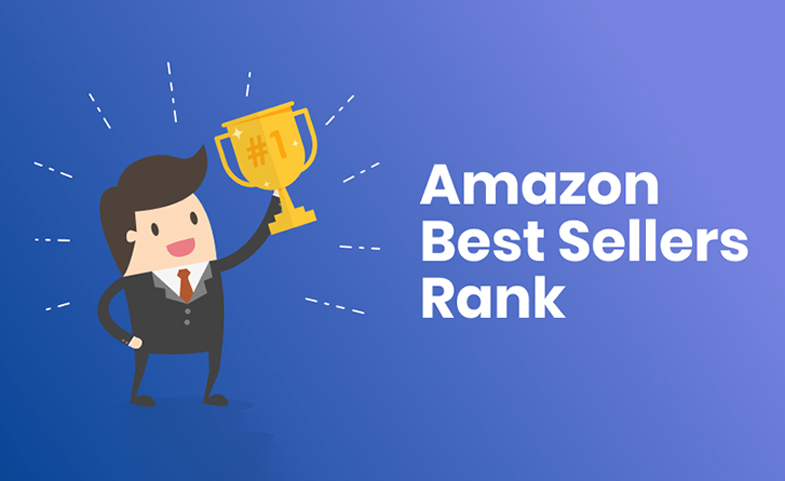Introduction
Amazon is one of the largest e-commerce platforms in the world, offering millions of products across various categories. For both shoppers and sellers, navigating this vast marketplace can be a challenge. Amazon Best Seller Rank (BSR) is a crucial metric that plays a significant role in understanding product popularity and sales performance.
What is Amazon Best Seller Rank (BSR)?
Amazon Best Seller Rank (BSR), also known as Amazon Sales Rank, is a numerical ranking assigned to each product listed on Amazon's marketplace. This ranking indicates a product's relative performance within its category or subcategory based on its sales volume. The lower the BSR number, the higher the product's sales rank, meaning it's selling better compared to others in the same category.
What’s the difference between BSR and search ranking?
When you type a phrase into Amazon search, the results you see appear based on its search ranking. You can improve the search ranking by using SEO practices to optimize product listings so they’ll rank higher in search results.
Best Seller Rank, on the other hand, indicates how a product ranks within the product category. If the BSR is high enough, the product will appear in the Best Sellers list.
A top BSR will not necessarily translate into a high organic ranking, and a high organic ranking isn’t guaranteed to translate into a high BSR score. However, both ranking systems are related to sales volume. So an item that’s selling well has a better chance of ranking higher, both in organic search and on the Amazon Best Sellers Rank list.
5 tactics to improve BSR
Here are some key tactics:
1. Choose product types carefully
Because Amazon's Sales Rank score fluctuates relative to other items in the same product category, it's important to choose your product category carefully when listing your product. Get familiar with your category and subcategory options by exploring the Best Sellers list. Then choose the most appropriate and accurate category, based on the products you want to sell. If you offer variations of a product, make sure to assign the parent ASIN and all child ASINs to the same category. Learn more about BSR and ASIN classification.
2. Optimize your ads to rank in search
Increase product visibility in organic search by optimizing product titles, product photos, product descriptions, bulleted lists of key features and benefits, and more. Try these optimization tools and techniques: Amazon SEO – Target specific keywords to rank higher in organic search. A/B testing – Run a test to compare two versions of a product title, photo, or other element to see which option leads to more purchases. A+ Content – Use this tool to add your own branding to your listings and create engaging images, backgrounds, and more.
3. Set competitive prices
Research pricing and test price ranges to determine the amount that can lead to increased sales, or use the Automated Pricing tool to automatically adjust prices to trends.
4. Take advantage of advertising and marketing tactics
You can increase your sales through e-commerce marketing methods through social media, blogging, affiliate marketing, and more. Try cost-per-click (CPC) advertising, subscription boxes, bundles, and other tactics to get more ecommerce orders. You can also take advantage of Amazon seller-specific advertising options.
5. Focus on customer engagement
Build strong customer relationships by providing a great shopping experience from start to finish. Answer customer questions, follow up after purchase, and use other online selling best practices to get great reviews and encourage returning buyers.
Here are some key points to keep in mind about BSR:
- Category-specific: BSR is category-specific, which means a product's rank in one category might differ from its rank in another. For example, a book might have a different BSR in the "Mystery" category compared to the "Romance" category.
- Updated frequently: BSR is updated regularly, often hourly or daily, to reflect the current sales performance of products. This means a product's rank can fluctuate frequently.
- Relative ranking: BSR is a relative ranking, meaning it doesn't provide specific sales numbers or revenue figures. It only shows how well a product is performing compared to others in the same category.
How is Amazon Best Seller Rank Calculated?
While Amazon doesn't disclose the exact algorithm behind BSR, it's widely understood that the rank is primarily determined by recent sales data. Several factors influence a product's BSR:
- Sales volume: The number of units sold in a given time period has the most significant impact on BSR. Products with higher sales will have a lower BSR.
- Sales velocity: The speed at which a product is selling also affects its rank. A product that sells consistently and quickly will have a better BSR than one with sporadic sales.
- Historical data: While recent sales are crucial, historical sales data also plays a role. Amazon may consider a product's overall sales performance to some extent.
- Category competition: The level of competition within a category or subcategory can impact a product's BSR. Highly competitive categories may require more sales to achieve a lower rank.
Why Does Amazon Best Seller Rank Matter?
Understanding BSR is essential for both Amazon sellers and buyers for several reasons:
For Sellers:
- Performance benchmark: BSR provides sellers with a benchmark to gauge the performance of their products compared to competitors. It helps them identify which products are selling well and which might need improvement.
- Keyword optimization: A lower BSR can increase a product's visibility in Amazon search results, leading to more organic traffic and potential sales. Sellers often optimize their product listings and use relevant keywords to improve their BSR.
- Inventory management: BSR fluctuations can help sellers anticipate changes in demand and adjust their inventory accordingly. If a product's BSR is rising, it may be time to restock.
- Marketing and promotions: Sellers can use BSR data to inform marketing strategies and promotions. Lowering a product's BSR through promotions can lead to increased sales and visibility.
For Buyers:
- Product credibility: BSR serves as a quick indicator of a product's popularity and quality within a category. Buyers often use it to assess whether a product is worth considering.
- Comparison shopping: BSR allows buyers to compare similar products and make informed choices. A lower BSR might indicate a product's higher quality or better value.
- Trend identification: Tracking BSR trends over time can help buyers identify emerging trends and popular products within their areas of interest.
Tips for Sellers to Improve Amazon Best Seller Rank
If you're an Amazon seller looking to improve your product's BSR, consider these strategies:
- Optimize product listings: Use relevant keywords, high-quality images, and detailed product descriptions to attract potential buyers.
- Competitive pricing: Offer competitive pricing compared to similar products in your category.
- Inventory management: Ensure you have enough stock to meet demand and avoid going out of stock.
- Run promotions: Use Amazon's promotional tools to run deals, discounts, or giveaways to boost sales temporarily.
- Solicit reviews: Encourage satisfied customers to leave positive reviews, as these can improve your product's credibility and visibility.
- Amazon Advertising: Invest in Amazon Advertising to increase product visibility and drive more sales.
Conclusion
Amazon Best Seller Rank is a valuable metric for both Amazon sellers and buyers. It offers insights into product popularity, helps sellers optimize their listings and marketing strategies, and assists buyers in making informed purchasing decisions. Understanding how BSR works and leveraging it effectively can be a game-changer in the competitive world of e-commerce on Amazon. So, whether you're a seller striving for success or a buyer searching for the best products, BSR is a metric you can't afford to ignore.


